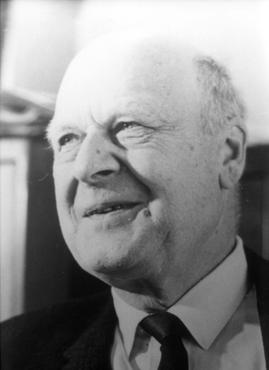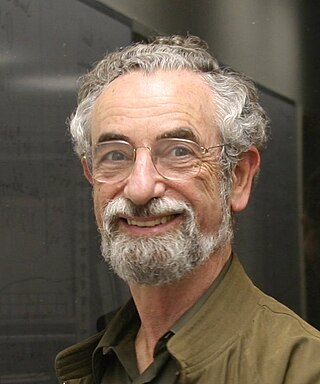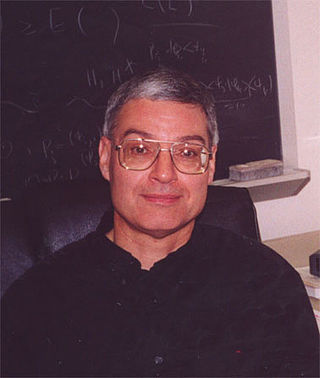In physics, statistical mechanics is a mathematical framework that applies statistical methods and probability theory to large assemblies of microscopic entities. It does not assume or postulate any natural laws, but explains the macroscopic behavior of nature from the behavior of such ensembles.

Lars Onsager was an American physical chemist and theoretical physicist. He held the Gibbs Professorship of Theoretical Chemistry at Yale University. He was awarded the Nobel Prize in Chemistry in 1968.

Yang Chen-Ning or Chen-Ning Yang, also known as C. N. Yang or by the English name Frank Yang, is a Chinese theoretical physicist who made significant contributions to statistical mechanics, integrable systems, gauge theory, and both particle physics and condensed matter physics. He and Tsung-Dao Lee received the 1957 Nobel Prize in Physics for their work on parity non-conservation of weak interaction. The two proposed that one of the basic quantum-mechanics laws, the conservation of parity, is violated in the so-called weak nuclear reactions, those nuclear processes that result in the emission of beta or alpha particles. Yang is also well known for his collaboration with Robert Mills in developing non-abelian gauge theory, widely known as the Yang–Mills theory.
Vladimir Gershonovich Drinfeld, surname also romanized as Drinfel'd, is a renowned mathematician from the former USSR, who emigrated to the United States and is currently working at the University of Chicago.

Denis James Evans, is an Australian scientist who is an Emeritus Professor at the Australian National University and Honorary Professor at The University of Queensland. He is widely recognised for his contributions to nonequilibrium thermodynamics and nonequilibrium statistical mechanics and the simulation of nonequilibrium fluids.

Elliott Hershel Lieb is an American mathematical physicist and professor of mathematics and physics at Princeton University who specializes in statistical mechanics, condensed matter theory, and functional analysis.
Benjamin Widom is the Goldwin Smith Professor of Chemistry at Cornell University. His research interests include physical chemistry and statistical mechanics. In 1998, Widom was awarded the Boltzmann Medal "for his illuminating studies of the statistical mechanics of fluids and fluid mixtures and their interfacial properties, especially his clear and general formulation of scaling hypotheses for the equation of state and surface tensions of fluids near critical points."
The principle of microscopic reversibility in physics and chemistry is twofold:

A vertex model is a type of statistical mechanics model in which the Boltzmann weights are associated with a vertex in the model. This contrasts with a nearest-neighbour model, such as the Ising model, in which the energy, and thus the Boltzmann weight of a statistical microstate is attributed to the bonds connecting two neighbouring particles. The energy associated with a vertex in the lattice of particles is thus dependent on the state of the bonds which connect it to adjacent vertices. It turns out that every solution of the Yang–Baxter equation with spectral parameters in a tensor product of vector spaces yields an exactly-solvable vertex model.

Giorgio Parisi is an Italian theoretical physicist, whose research has focused on quantum field theory, statistical mechanics and complex systems. His best known contributions are the QCD evolution equations for parton densities, obtained with Guido Altarelli, known as the Altarelli–Parisi or DGLAP equations, the exact solution of the Sherrington–Kirkpatrick model of spin glasses, the Kardar–Parisi–Zhang equation describing dynamic scaling of growing interfaces, and the study of whirling flocks of birds. He was awarded the 2021 Nobel Prize in Physics jointly with Klaus Hasselmann and Syukuro Manabe for groundbreaking contributions to theory of complex systems, in particular "for the discovery of the interplay of disorder and fluctuations in physical systems from atomic to planetary scales".
Robert Harry Kraichnan, a resident of Santa Fe, New Mexico, was an American theoretical physicist best known for his work on the theory of fluid turbulence.

Barry Malcolm McCoy is an American physicist, known for his contributions to classical statistical mechanics, integrable models and conformal field theories.

Alexander Borisovich Zamolodchikov is a Russian physicist, known for his contributions conformal field theory, and statistical mechanics, and subsequently string theory and condensed matter physics.
A spin model is a mathematical model used in physics primarily to explain magnetism. Spin models may either be classical or quantum mechanical in nature. Spin models have been studied in quantum field theory as examples of integrable models. Spin models are also used in quantum information theory and computability theory in theoretical computer science. The theory of spin models is a far reaching and unifying topic that cuts across many fields.

Vladimir E. Korepin is a professor at the C. N. Yang Institute of Theoretical Physics of the Stony Brook University. Korepin made research contributions in several areas of mathematics and physics.
John Lawrence CardyFRS is a British–American theoretical physicist. He is best known for his work in theoretical condensed matter physics and statistical mechanics, and in particular for research on critical phenomena and two-dimensional conformal field theory.
T. Bill Sutherland is an American theoretical physicist, Emeritus Professor of Physics at the University of Utah.

Friedrich "Fritz" Gesztesy is a well-known Austrian-American mathematical physicist and Professor of Mathematics at Baylor University, known for his important contributions in spectral theory, functional analysis, nonrelativistic quantum mechanics, ordinary and partial differential operators, and completely integrable systems. He has authored more than 300 publications on mathematics and physics.
The chiral Potts model is a spin model on a planar lattice in statistical mechanics studied by Helen Au-Yang Perk and Jacques Perk, among others. It may be viewed as a generalization of the Potts model, and as with the Potts model, the model is defined by configurations which are assignments of spins to each vertex of a graph, where each spin can take one of values. To each edge joining vertices with assigned spins and , a Boltzmann weight is assigned. For this model, chiral means that . When the weights satisfy the Yang–Baxter equation, it is integrable, in the sense that certain quantities can be exactly evaluated.










